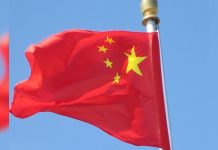The Uyghurs, a predominantly Muslim ethnic minority concentrated in China’s Xinjiang region, have drawn global attention due to reports of severe human rights abuses. In 2017, Beijing initiated a campaign under President Xi Jinping aimed at eradicating separatism and terrorism in Xinjiang. However, this effort has been widely condemned internationally, with the United Nations identifying it as constituting “crimes against humanity”.
Allegations suggest that China has used the pretext of combating extremism to justify a systematic crackdown on Uyghurs, which some nations and organisations have labelled as genocide. Chinese authorities have linked Uyghur activism to groups like the East Turkestan Islamic Movement (ETIM), portraying them as extremists. This has led to widespread violations of human rights, including mass detentions, forced labour, and cultural suppression, further tarnishing China’s global reputation.
The East Turkestan Movement (ETM) emerged in the late 1990s as a response to decades of systemic oppression faced by the Uyghurs in the Xinjiang Uyghur Autonomous Region (XUAR), which was annexed by China following its occupation in 1949. Despite being officially recognised as one of China’s ethnic minorities, the Uyghurs were subjected to aggressive assimilation policies that sought to undermine their cultural distinctiveness through violent suppression.
The ETM, founded by Turkic-speaking Uyghur separatists, represents a nationalist aspiration to establish an independent state of East Turkestan. This envisioned state would encompass regions spanning Kazakhstan, Kyrgyzstan, Uzbekistan, Turkey, Pakistan, Afghanistan, and Xinjiang, providing Uyghurs with a sovereign territory where they could freely preserve their cultural identity without interference from Communist China. The ETM combines religious and ethnic nationalism as its ideological foundation, reflecting resistance against China’s long-standing practices of cultural erasure, territorial control, and systemic marginalisation. The movement has involved not only mobilisation efforts but also armed resistance within Xinjiang as part of its broader struggle for self-determination.
China has responded forcefully to the East Turkestan Movement (ETM), branding it a “terrorist organisation” with alleged connections to transnational groups such as al-Qaeda and the Taliban, which Beijing claims aim to undermine China’s territorial integrity. This characterisation is rooted in Islamophobia and mirrors the post-9/11 environment in the West, where suspicion of Muslims intensified following the attacks. To delegitimise ETM’s separatist ambitions, China labelled it as the “most direct and realistic security threat” to its national stability.









































